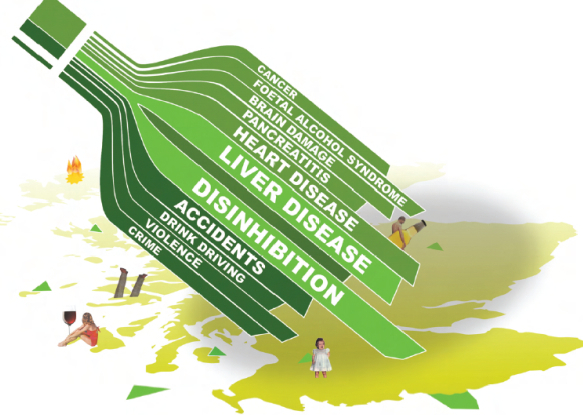
While I don’t think too much about what I post on Twitter, lots of companies do think about their Twitter frequency, content, timing, etc. How much is the right amount? How much is too much? Organizations should, and usually do, give this careful consideration. Last year, Track Social conducted a study to determine the sweet spot entitled Optimizing Twitter Engagement – Part 2: How Frequently to Tweet. They determined that 2-5 tweets per day is best to get a response from your followers. Less than that and they forget about you, more than that and they start to tune out. Looking at my own Twitterstream, I tend to tweet 4-6 times a day, usually no more than 10; though sometimes I tweet more when I’m traveling.
Lately, I’ve been noticing that I see an awful lot of tweets from the prohibitionists at Alcohol Justice, usually with a great deal of repetition. I started noticing that I keep seeing the same twitpic day after day, the same plea for money day after day and the same propaganda day after day. For example, recently I was annoyed by one of their tweets, and considered doing a post about it, but then changed my mind. But I noticed I saw it again, and then again, and then again today. It turns out they first tweeted the one below every single day since December 17, which was the first time, until today. That’s fourteen times in two weeks. Exactly the same every time, as below. They could change the wording, change it up, make it at least appear fresh, but nope, they just retweet it over and over again, as is.

What originally annoyed me is that clicking on the link takes you to a story, Watchdog Group Slams Alcohol “Social Responsibility” Campaigns. The “watchdog” doing the slamming is none other than Alcohol Justice. So in effect, every day they’re saying hey, look at this information about what a watchdog group is saying as if it’s from an objective, unbiased source. But what they’re really saying is: “hey check out this study by us that we got someone else to post without questioning anything.” It feels dishonest at best. There’s nothing about it that’s not slimy and self-referential, more of the circle jerk of prohibitionist propaganda. They could have tweeted that there’s a story about their own study or something to the effect that here’s an article by one of our own, or at least own the information. But that would be honest, something the watchdog holding big alcohol accountable has a hard time doing themselves.
But as this sank in, I also noticed I’ve been seeing lots of repetition. Beating a dead horse seems to be part of the S.O.P., a policy decision. As far as the amount of tweets, looking at the last ten days, Alcohol Justice tweeted 369 times, not including RT’s. That’s an average of almost 37 tweets per day. As of 2:30 p.m. PST, they’ve tweeted 70 times today! That would push the average to nearly forty tweets per day.
Beyond the insane number, it’s the repetition that’s so amazing. There appears to be a calculated policy of tweeting the exact same tweets every day for weeks on end. Just seeing the same graphics tweeted every day makes that point. Take a cursory glance down their twitterstream and you’ll see the same photo and language over and over and over again. The graphic for this tweet is a bottle of Absolut in a rainbow pattern and the text “Absolut Pride,” making me wonder if perhaps they’re also subtly trying to appeal to homophobics, too. Otherwise, what was the point of choosing that particular ad to use in a post about social responsibility? Personally, I like this colorful neon beer bottle sign better. But then, I generally prefer beer.

And then there’s donations, pleas for which are seemingly never-ending. During the month of December, so far, they’ve asked followers for money 57 times, or an average of almost twice a day.
The amount of redundancy in the average day’s Twitter feed by Alcohol Justice reminds me of an old Monty Python bit with a government agency called the “Department of Redundancy Department.” Can their nearly 16,000 followers really welcome that much repetition in the information they’re sending out on a daily basis? Or can it be possible they think so little of those followers that they believe that they need to keep telling them the same things over and again in the hopes that it sinks in eventually?















